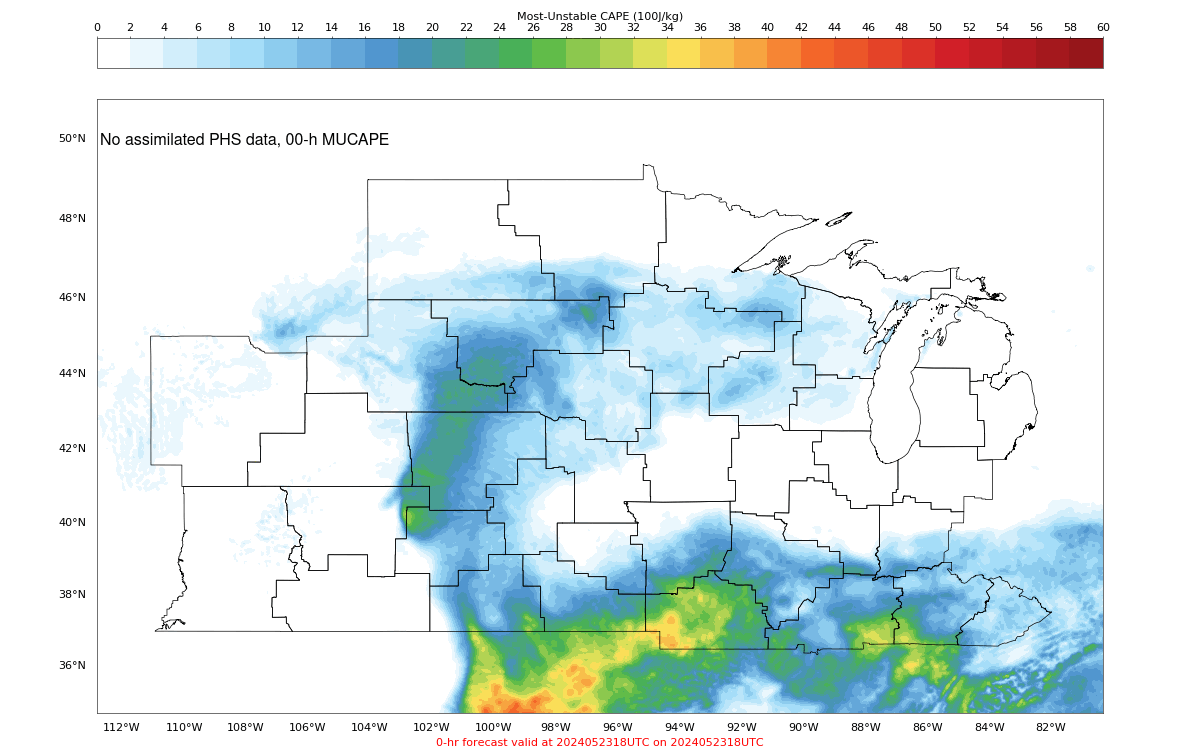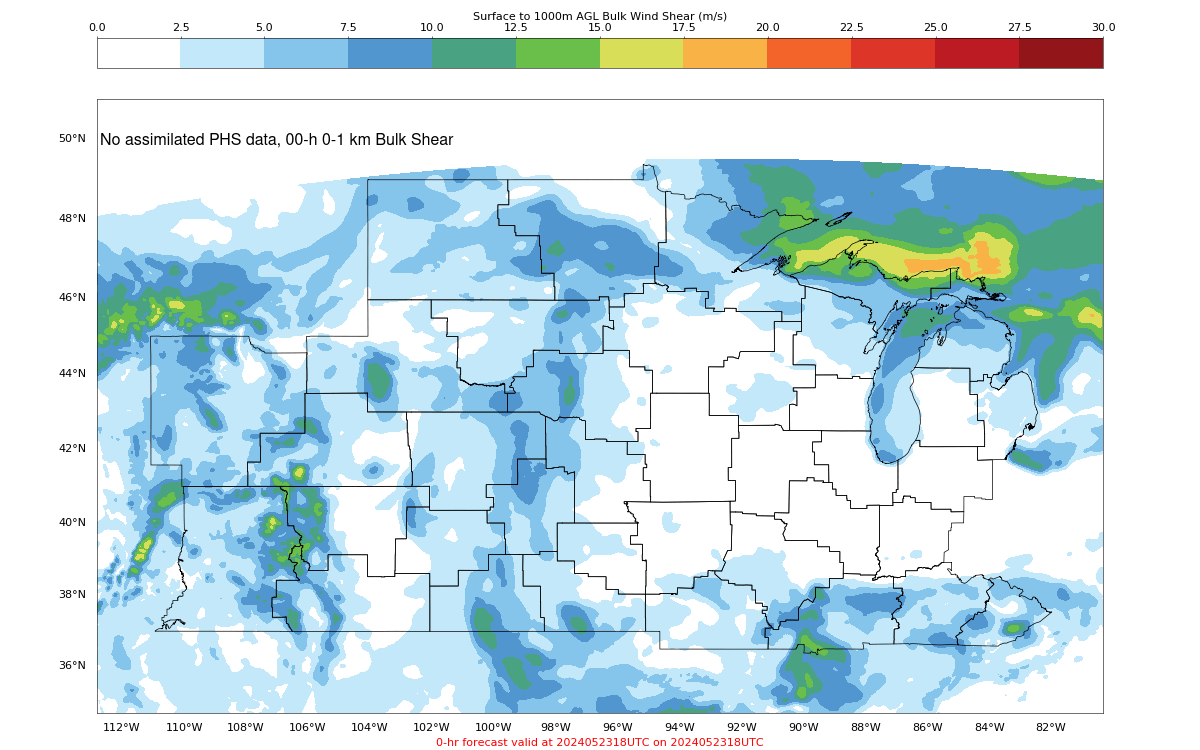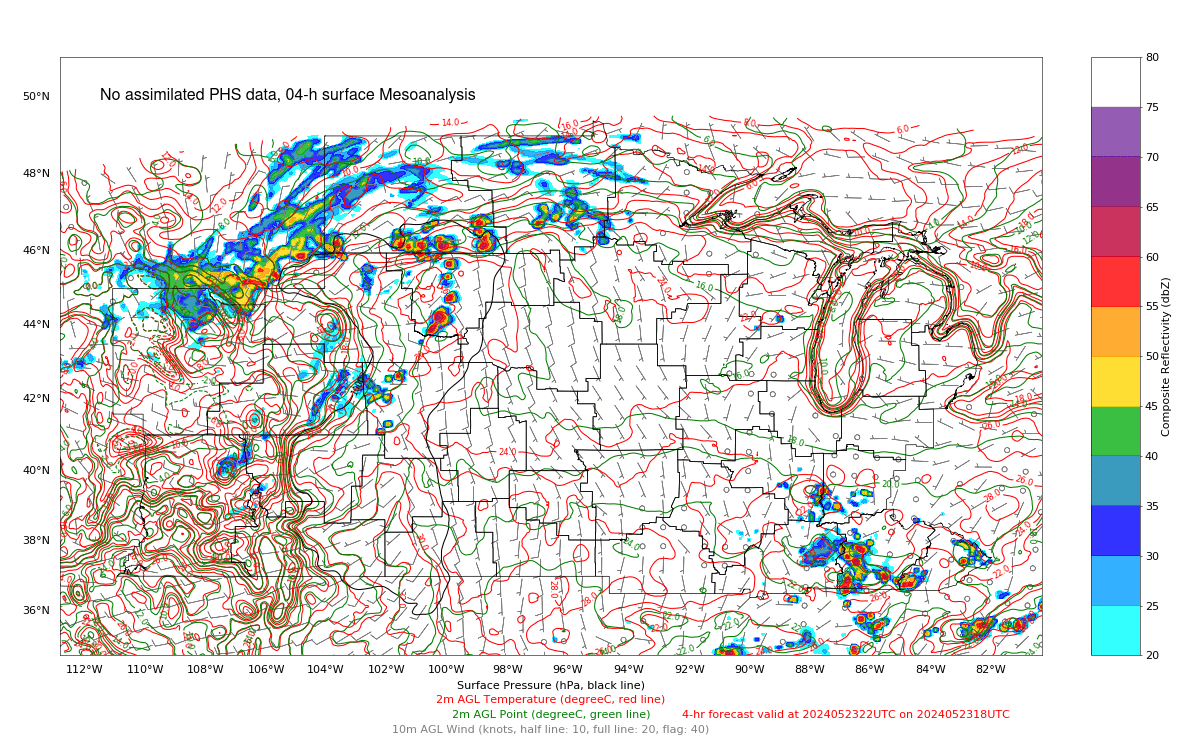PHS information adds small-scale variability to initial fields

Polar Hyperspectral Data (PHS) can be married to ABI data via Data Fusion, and that data that exploits the high spectral resolution of Polar Hyperspectral Data (from IASI and CrIS data on Metop and JPSS satellites, respectively) and the high spatial/temporal resolution of ABI data can be assimilated into a numerical model. The toggle above compares MUCAPE fields at 0000 UTC from an 1800 UTC 23 May 2024 initialization (more output from this day is shown in this blog post) created with and without PHS data. A similar toggle that compares 0-1 km Bulk Shear (with and without PHS data) is below. In both fields, the PHS data has introduced low-level variability that should better reflect the actual distribution of thermodynamics as measured by the sounders on the LEO satellites.

Does the better representation of thermodynamic variability (and variability in dynamics) translate in this case to a better forecast. In the previous blog post, the WRF simulation with PHS data starting at 1600 UTC and 1700 UTC did show better convective initiation times than the HRRR simulation that did not benefit from the inclusion of PHS data (i.e, this figure, and this one, respectively). The 4-h forecast valid at 2200 UTC (that compares 4-km WRF with PHS data and 3-km HRRR data, here, shows better initialization in the WRF with PHS data). The toggle below compares 4-h forecasts from a 4-km WRF model initialized at 1800 UTC, and valid at 2200 UTC; one simulation includes assimilated PHS data, and one does not. The initiation of convection is not substantially different in the model runs initialized at 1800 UTC. The higher spatial variability for this case at this time does not lead to a better forecast of initiation as was apparent in the earlier model runs described in this blog post.

—————
Free Secure Email – Transcom Sigma
Transcom Hosting
Transcom Premium Domains
